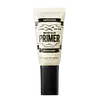What's inside
What's inside
 Key Ingredients
Key Ingredients

 Benefits
Benefits

 Concerns
Concerns

 Ingredients Side-by-side
Ingredients Side-by-side

Water
Skin ConditioningMethyl Methacrylate Crosspolymer
Butylene Glycol
HumectantPentylene Glycol
Skin ConditioningSodium Acrylates Crosspolymer-2
AbsorbentNiacinamide
SmoothingArtemisia Vulgaris Oil
PerfumingAmmonium Acryloyldimethyltaurate/Vp Copolymer
Sodium Acrylate/Sodium Acryloyldimethyl Taurate Copolymer
Emulsion StabilisingGlyceryl Caprylate
EmollientEthylhexylglycerin
Skin ConditioningPolyisobutene
Adenosine
Skin ConditioningSorbitan Oleate
EmulsifyingCaprylyl/Capryl Glucoside
CleansingGlycerin
HumectantTocopherol
Antioxidant1,2-Hexanediol
Skin ConditioningSodium Hyaluronate
HumectantBeta-Glucan
Skin ConditioningHydrolyzed Hyaluronic Acid
HumectantSodium Acetylated Hyaluronate
HumectantWater, Methyl Methacrylate Crosspolymer, Butylene Glycol, Pentylene Glycol, Sodium Acrylates Crosspolymer-2, Niacinamide, Artemisia Vulgaris Oil, Ammonium Acryloyldimethyltaurate/Vp Copolymer, Sodium Acrylate/Sodium Acryloyldimethyl Taurate Copolymer, Glyceryl Caprylate, Ethylhexylglycerin, Polyisobutene, Adenosine, Sorbitan Oleate, Caprylyl/Capryl Glucoside, Glycerin, Tocopherol, 1,2-Hexanediol, Sodium Hyaluronate, Beta-Glucan, Hydrolyzed Hyaluronic Acid, Sodium Acetylated Hyaluronate
Cyclopentasiloxane
EmollientWater
Skin ConditioningPropylene Glycol
HumectantDimethicone Crosspolymer
Emulsion StabilisingCyclohexasiloxane
EmollientDimethicone/Vinyl Dimethicone Crosspolymer
Skin ConditioningIsododecane
EmollientSilica
AbrasiveVinyl Dimethicone/Methicone Silsesquioxane Crosspolymer
Sodium Chloride
MaskingCetyl PEG/PPG-10/1 Dimethicone
EmulsifyingDimethicone
EmollientDisteardimonium Hectorite
StabilisingPolyacrylamide
C30-45 Olefin
Skin ConditioningC13-14 Isoparaffin
EmollientC30-45 Alkyl Dimethicone
Skin ConditioningParfum
MaskingHydrogenated Polyisobutene
EmollientIsononyl Isononanoate
EmollientPropylene Carbonate
SolventTitanium Dioxide
Cosmetic ColorantIsopentyldiol
HumectantButylene Glycol
HumectantStearoxytrimethylsilane
EmollientLaureth-7
Emulsifying1,2-Hexanediol
Skin ConditioningTrifolium Pratense Flower Extract
AstringentRosmarinus Officinalis Extract
AntimicrobialCamellia Sinensis Leaf Extract
AntimicrobialSodium Hyaluronate
HumectantCyclopentasiloxane, Water, Propylene Glycol, Dimethicone Crosspolymer, Cyclohexasiloxane, Dimethicone/Vinyl Dimethicone Crosspolymer, Isododecane, Silica, Vinyl Dimethicone/Methicone Silsesquioxane Crosspolymer, Sodium Chloride, Cetyl PEG/PPG-10/1 Dimethicone, Dimethicone, Disteardimonium Hectorite, Polyacrylamide, C30-45 Olefin, C13-14 Isoparaffin, C30-45 Alkyl Dimethicone, Parfum, Hydrogenated Polyisobutene, Isononyl Isononanoate, Propylene Carbonate, Titanium Dioxide, Isopentyldiol, Butylene Glycol, Stearoxytrimethylsilane, Laureth-7, 1,2-Hexanediol, Trifolium Pratense Flower Extract, Rosmarinus Officinalis Extract, Camellia Sinensis Leaf Extract, Sodium Hyaluronate
Ingredients Explained
These ingredients are found in both products.
Ingredients higher up in an ingredient list are typically present in a larger amount.
1,2-Hexanediol is a synthetic liquid and another multi-functional powerhouse.
It is a:
- Humectant, drawing moisture into the skin
- Emollient, helping to soften skin
- Solvent, dispersing and stabilizing formulas
- Preservative booster, enhancing the antimicrobial activity of other preservatives
Butylene Glycol (or BG) is used within cosmetic products for a few different reasons:
Overall, Butylene Glycol is a safe and well-rounded ingredient that works well with other ingredients.
Though this ingredient works well with most skin types, some people with sensitive skin may experience a reaction such as allergic rashes, closed comedones, or itchiness.
Learn more about Butylene GlycolSodium Hyaluronate is hyaluronic acid's salt form. It is commonly derived from the sodium salt of hyaluronic acid.
Like hyaluronic acid, it is great at holding water and acts as a humectant. This makes it a great skin hydrating ingredient.
Sodium Hyaluronate is naturally occurring in our bodies and is mostly found in eye fluid and joints.
These are some other common types of Hyaluronic Acid:
Learn more about Sodium HyaluronateWater. It's the most common cosmetic ingredient of all. You'll usually see it at the top of ingredient lists, meaning that it makes up the largest part of the product.
So why is it so popular? Water most often acts as a solvent - this means that it helps dissolve other ingredients into the formulation.
You'll also recognize water as that liquid we all need to stay alive. If you see this, drink a glass of water. Stay hydrated!
Learn more about Water